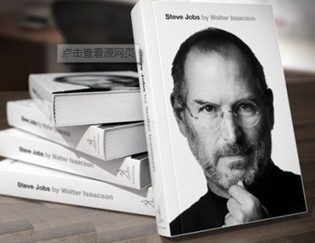CHAPTER TWELVE
第十二章
THE DESIGN
設(shè)計(jì)
Real Artists Simplify
大道至簡(jiǎn)
A Bauhaus Aesthetic
包豪斯式的美學(xué)標(biāo)準(zhǔn)
Unlike most kids who grew up in Eichler homes, Jobs knew what they were and why they were so wonderful. He liked the notion of simple and clean modernism produced for the masses. He also loved listening to his father describe the styling intricacies of various cars. So from the beginning at Apple, he believed that great industrial design—a colorfully simple logo, a sleek case for the Apple II—would set the company apart and make its products distinctive.
和大多數(shù)在埃奇勒建造的房子中長(zhǎng)大的孩子不同,喬布了解這些房子,也知道它們好在哪里。他喜歡“面向大眾的簡(jiǎn)潔現(xiàn)代主義設(shè)計(jì)”這個(gè)概念。他還喜歡聽父親講述不同的汽車上紛繁的設(shè)計(jì)細(xì)節(jié)。所以,從蘋果公司建立之初,他就相信杰出的工業(yè)設(shè)計(jì)——多彩簡(jiǎn)單的標(biāo)志以及AppleII使用的雅致時(shí)髦的箱子——可以突出自己的公司,也讓公司的產(chǎn)品顯得與眾不同。
The company’s first office, after it moved out of his family garage, was in a small building it shared with a Sony sales office. Sony was famous for its signature style and memorable product designs, so Jobs would drop by to study the marketing material. “He would come in looking scruffy and fondle the product brochures and point out design features,” said Dan’l Lewin, who worked there. “Every now and then, he would ask, ‘Can I take this brochure?’” By 1980, he had hired Lewin.
在公司搬出喬布斯的車庫(kù)后,第一個(gè)辦公場(chǎng)所在一棟小建筑里,這里還有索尼公司的一處銷售辦事處。索尼以其獨(dú)特的風(fēng)格和令人難的產(chǎn)品設(shè)計(jì)而聞名,所以喬布斯經(jīng)常到他們的辦公室去研究宣傳材料。“他走進(jìn)來,邋里邋遢的,撫弄著產(chǎn)品宣傳冊(cè),指出一些產(chǎn)品設(shè)計(jì)上的特點(diǎn)。”在那兒工作的丹·盧因(Dan-lLewin)說,“時(shí)不時(shí)地,他還會(huì)問我:‘我能把這個(gè)冊(cè)子拿走嗎?’”到1980年,喬布斯把盧因聘請(qǐng)到了蘋果公司。
His fondness for the dark, industrial look of Sony receded around June 1981, when he began attending the annual International Design Conference in Aspen. The meeting that year focused on Italian style, and it featured the architect-designer Mario Bellini, the filmmaker Bernardo Bertolucci, the car maker Sergio Pininfarina, and the Fiat heiress and politician Susanna Agnelli. “I had come to revere the Italian designers, just like the kid in Breaking Away reveres the Italian bikers,” recalled Jobs, “so it was an amazing inspiration.”
從1981年6月開始,喬布斯開始參加在阿斯彭舉辦的一年一度的國(guó)際設(shè)計(jì)大會(huì)(InternationalDesignConference),這一時(shí)期,他對(duì)暗色調(diào)、工業(yè)氣息十足的索尼設(shè)計(jì)的喜愛逐漸減弱。那年會(huì)議的焦點(diǎn)是意大利風(fēng)格,出席的有建筑師兼設(shè)計(jì)師馬里奧、貝里尼(MarioBellini),電影制片人貝納多·貝托魯奇(BernardoBertolucci),汽車制造商塞爾吉奧·平尼法瑞那(SergioPininfarina)和菲亞特汽車公司的女繼承人、政治家蘇珊娜·阿涅利(SusannaAgnelli)。“我就是去膜拜那些意大利設(shè)計(jì)師的,就好像電影《告別昨日》(BreakingAcoay)中的孩子膜拜意大利自行車手一樣。”喬布斯回憶說,“那次會(huì)議真是一個(gè)奇妙的啟示。”
In Aspen he was exposed to the spare and functional design philosophy of the Bauhaus movement, which was enshrined by Herbert Bayer in the buildings, living suites, sans serif font typography, and furniture on the Aspen Institute campus. Like his mentors Walter Gropius and Ludwig Mies van der Rohe, Bayer believed that there should be no distinction between fine art and applied industrial design. The modernist International Style championed by the Bauhaus taught that design should be simple, yet have an expressive spirit. It emphasized rationality and functionality by employing clean lines and forms. Among the maxims preached by Mies and Gropius were “God is in the details” and “Less is more.” As with Eichler homes, the artistic sensibility was combined with the capability for mass production.
在阿斯彭,喬布斯接觸到了包豪斯運(yùn)動(dòng)干凈、實(shí)用的設(shè)計(jì)理念,這一理念深受赫伯特·拜爾(HerbertBayer)的推崇,被他運(yùn)用到了建筑、家居房屋、無襯線字體排印以及阿斯彭研究所的家具上。拜爾和他的導(dǎo)師沃爾特·格羅皮烏斯(WalterGropius)以及路德維希·密斯·凡德羅(LudwigMiesvanderRohe)—樣,也認(rèn)為藝術(shù)和應(yīng)用工業(yè)設(shè)計(jì)之間不應(yīng)該有區(qū)別。包豪斯擁護(hù)的現(xiàn)代主義國(guó)際風(fēng)格告訴人們,設(shè)計(jì)應(yīng)該追求簡(jiǎn)約,同時(shí)具有表現(xiàn)精神。它通過運(yùn)用干凈的線條和形式來強(qiáng)調(diào)合理性和功能性。密斯和格羅皮烏斯宣揚(yáng)的準(zhǔn)則中就有“上帝就在細(xì)節(jié)之中”和“少即是多”這樣的話。正如埃奇勒的房屋一樣,藝術(shù)敏感性和大規(guī)模生產(chǎn)的能力結(jié)合到了一起。
Jobs publicly discussed his embrace of the Bauhaus style in a talk he gave at the 1983 design conference, the theme of which was “The Future Isn’t What It Used to Be.” He predicted the passing of the Sony style in favor of Bauhaus simplicity. “The current wave of industrial design is Sony’s high-tech look, which is gunmetal gray, maybe paint it black, do weird stuff to it,” he said. “It’s easy to do that. But it’s not great.” He proposed an alternative, born of the Bauhaus, that was more true to the function and nature of the products. “What we’re going to do is make the products high-tech, and we’re going to package them cleanly so that you know they’re high-tech. We will fit them in a small package, and then we can make them beautiful and white, just like Braun does with its electronics.”
1983年的阿斯彭設(shè)計(jì)大會(huì)上,喬布斯發(fā)表了一篇以“未來絕對(duì)不會(huì)和過去相同”為主題的演講,公開闡述他對(duì)包豪斯風(fēng)格的熱情擁護(hù)。演講在一個(gè)巨大的音樂帳篷中舉行,喬布斯稱贊了包豪斯風(fēng)格的簡(jiǎn)單樸素,也預(yù)言了索尼風(fēng)格的消亡。“當(dāng)下工業(yè)設(shè)計(jì)的潮流就是索尼的那種髙科技感,也就是金屬灰色,要么就涂成黑色,加一些怪異的設(shè)計(jì)。”他說,“這么做很容易,但不夠好。”他提出了一個(gè)源自包豪斯風(fēng)格的替代方案,更加忠實(shí)于產(chǎn)品的功能和本性:“我們要做的,就是讓產(chǎn)品科技感十足,然后用上簡(jiǎn)單干凈的包裝,讓科技感一目了然。我們會(huì)把產(chǎn)品放在小包裝盒里,讓它們看上去純白漂亮,就像博朗生產(chǎn)的電器一樣。”











